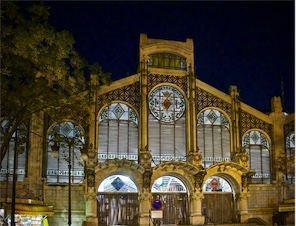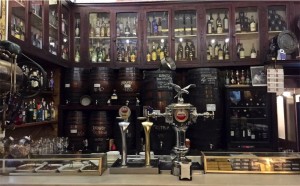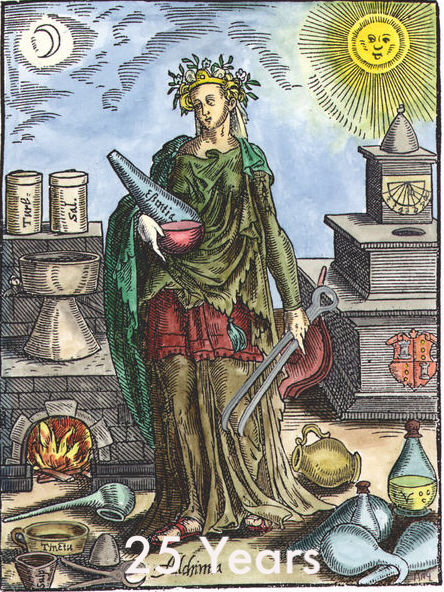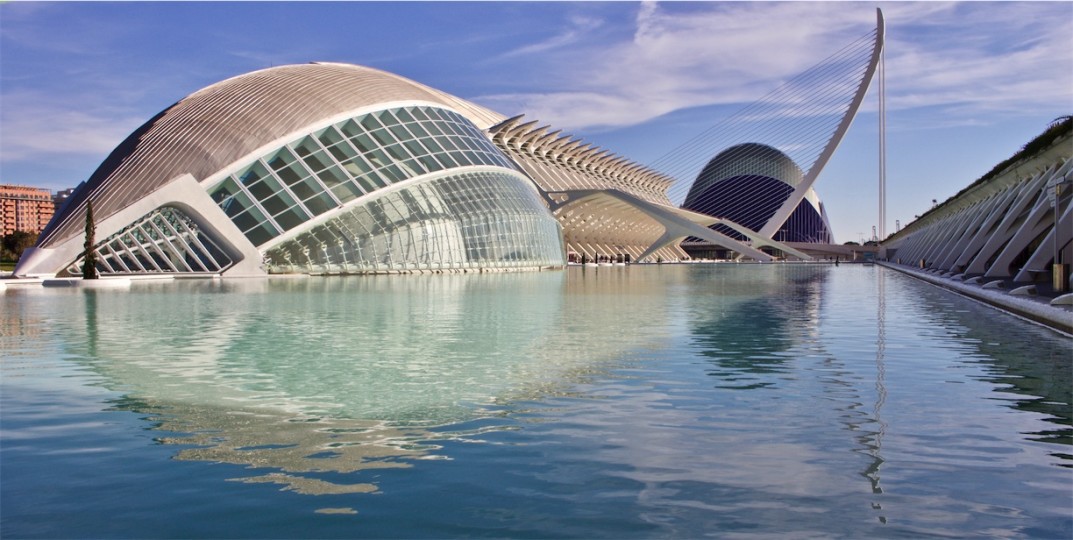València – where ancient meets modern
This article is the third and final instalment in my Levantine trilogy. Having covered Utiel-Requena and Alicante, this time it’s about the city of València and the DO wine region of the same name. They blend ancient and modern Spanish cultures into something unique. It makes both of them places of contrast and essential visits, whether for tourism or wine. Or, in my case, both.
Part 1 – The City
València is the third largest Spanish city after Madrid and Barçelona. Perhaps it’s a little overshadowed by them but, as a newbie, I found it both magnificent in appearance and confident in manner. Arriving by air, the airport is just 9km from the heart of old town (Ciutat Vella). If you’re flying, then try to get a window seat on the plane, as the approach turns over the Mediterranean. It gives a birds-eye view of the coast and the city set against a mountainous backdrop. A perfect appetiser for what’s in store.
Spring and Autumn are the best times to visit. Then the colours and activities are at their peaks. Spring is when the Las Fallas fiesta brings some 2 million visitors into town, with 24/7 activities and spectacular fireworks. Summer is scorching, ideal if you prefer the 4km of excellent beaches. I went just before Christmas when temperatures were still a balmy 20°C. The Valèncianos were swaddled in their winter clothing. I found a t-shirt and a light sweater were enough, even at night.
If you like Barça or perhaps Rome then I guarantee you’ll fall in love with València, it’s just as buzzy and exciting, just on a more manageable scale. My first week there has left me indelibly marked.
The Romans founded València as a place of retirement for soldiers. But it soon grew into a large port; historically on the silk route from the Orient, exporting vast quantities of wine, produce and industrial goods around the Med. It’s dual-language too; Spanish and Valèncian, which mixes Catalan with a smattering of Moorish, reflects an often turbulent past.
The River Túria once flowed through the heart of the city. However, after one catastrophic flood too many it was diverted around the city edge. Now the old river bed is the Jardí del Túria. It’s a beguiling park and garden, a green ribbon cutting through the city and an excellent way to navigate and explore. Getting around, whether on foot or by bike, is easy. The integrated bus, tram and metro are useful for exploring beyond the confines of the old town.
The coastal end of the Jardí is where you’ll find the jaw-dropping Ciutat de les Arts I les Ciències, the City of Arts and Sciences. It’s one of the jewels in València’s crown and is now designated one of the Twelve Treasures of Spain. If you have time for only one thing, make this it.
It’s an unmissable group of neo-futurist buildings. These are mostly by architect Santiago Calatrava; a local boy now of world renown. It includes a science museum, a cinema/planetarium, Opera House, gardens, restaurants and an oceanographic park, all linked by walkways, trees, pools and the bridge known locally as El Jamonero. Set against a bright azure sky, it’s dazzling from any angle, a photographers’ dream assignment.
But the old town also has charms aplenty. Try the Plaça del Ajuntament, (City Hall Square) at night, with its bustling boutiques and neon-lit flower stalls. Around the corner is El Corte Ingles, the destination of choice for retail therapy until late.
The Cathedral makes for a more peaceful visit and contains, for believers, the Holy Grail. My favourite place was the enormous Mercado Central, a focal point for bars and restaurants. The market is in Modernista style, all glass with iron flounces. Inside, explore miles of stalls selling every kind of fresh produce, including seafood, vegetables, fruit, hams and snails. There are excellent wine stalls too, plus bars and tapas.

Mercado Central, València
Eating and drinking are both brilliant and inexpensive here. Spend time lingering over lunch and eat your evening meal late. For people-watching, beer and gin until 3 a.m., try the terrace at Cafe Negrito in the Barrio di Carmen. Meanwhile, Bodega Casa Montaña is a bohemian wine bar and restaurant down by the old fishing village of El Cabanyal that has 20,000 bottles of wine in the cellar, more on tap and authentic local food. It’s a visual and atmospheric delight too. Nothing seems to have changed since it opened in 1836.

Bodega Casa Montaña, València
As for the food, this is the home of Paella, which comes in many variations. But Valencianos don’t live by rice alone. I had excellent Gazpacho Manchego with snails and rabbit, but the range of tapas, seafood, meats and cheeses offered are glorious. And do try Horchata, a delicious cold drink made from tiger nuts and a local speciality. ¡Buen provecho!
There’s plenty of València I never got to see this time around, so that’ll be on the agenda for my next visit!
Part 2 – the wines
Though you may decide not to, it’s easy to escape the city itself, by road or rail. The lowlands immediately surrounding the city are hugely productive for rice, fruit and veg. Indeed, València is better known for Oranges than for its wines. Everywhere is a sea of orange trees and persimmons. As the mountains rise ahead, this gives way to much unspoilt natural beauty, where olives and scrublands replace oranges and palms. Finally, on the uplands there are vines. Evidence of winemaking in these parts dates back at least 2,700 years.
The València DO wine region covers some 15,000 hectares and has four distinct subzones, all at altitude. To the north and west are the zones of Moscatel, Valentino and Alto Túria, with the slightly lower Clariano to the south. Cava is made too, with its own DO. The main grape varieties are indigenous. Merseguera, Muscat and Macabeo are white, with Monastrell, Garnacha Tintorera and a little Tempranillo in red. Of course, the typical list of white and red international suspects is also well represented.
As in Utiel-Requena and Alicante, the Spanish wine push towards quality means that there is plenty of artisanal experimentation, including the rediscovery of rare local varieties. The dry climate means that organic farming is common too. The traditional bulk volume wines for export are also evident, with many large wineries and cooperatives making wines of every conceivable style.
Thanks to the València DO, I was able to try many of the wines made and talk to producers that are making excellent wines. Of all of these, Celler del Roure is one of the most exciting properties in the region. It has three separate vineyards, near Moixent and the Les Alcusses Valley, part of the Clariano subzone. It’s just an hours drive south from València.

The Celler del Roure terroir, València DO
Celler del Roure was created by Pablo Calatayud and his family in 1995. He’s making authentic artisanal wines using rare local grapes such as the red Mando and white Verdil. Also, his project has rediscovered how to use buried terracotta amphorae for ageing the wines. Indeed, the 500-year-old winery that had fallen into disuse before his arrival still has 97 unbroken original amphorae. After much experimentation and research, the results have been so successful that a new underground cellar has been excavated, with new amphorae ready to be installed. Pablo and his winemaker Javier Revert use the amphorae for ageing the wines, after fermentation in stainless steel tanks with minimal sulphur and wild yeasts.

Celler del Roure buried Amphorae, DO València
The buried amphorae maintain just the right temperature and humidity and terracotta allows a little oxygenation, similar to that of an oak cask. However, no wood marks these wines and the wine has less disturbance, so the result is great freshness, purity and elegance. This technique means these are not “orange” or “natural wines” with their “faulty” reductive or oxidative flavours. They come in Burgundy-shaped bottles. It distinguishes them from their “normal” range made in their nearby modern winery, which is packaged in Bordeaux-shaped bottles to emphasise the difference.
Here are my thoughts on the four amphorae-made wines in the range, plus one of the “conventional” wines.
Cullerot 2015 white, 13%. 40% Verdil, 30% Macabeo, 30% Malvasia, aged six months in amphorae, yet to be bottled. Lovely fresh pale-coloured white, with lemon peel and a silky texture. They’ve removed the Chardonnay and PX of previous years and upped the Verdil it seems. Will improve in bottle, already delicious. Tadpole label. Prices: Spain €6.50, Ultracomida £10.95
Safrà 2015 red, 12.5%. 90% Mando, 5% Garnacha, 5% Monastrell. Aged six months in amphorae. A red with the soul of a white, great purity. Mando is light coloured, floral and ideally suited to the amphorae regime. Bright cherry fruit. Perfect summer drinking, as it can be slightly chilled. Fabulous wine. Yellow Butterfly label. Prices: Spain €9.00, the Fine Wine Company £13.75, The Wine Society £10.50
Vermell 2014 red, 13.5%. 40% Garnacha, 40% Monastrell, 20% Mando. Aged 6 months in amphorae. A fuller blend, deeper colour, with juicy red berry fruit. Splendid. Red butterfly label. Prices: Spain €6.00, Wine Direct £12.95
Parotet 2013 red, 13.5%. 75% Mando, 25% Monastrell. Aged 14 months in amphorae. The star wine of this tasting, utterly brilliant. It’s about freshness and balance, not a big Mediterranean wine at all. Mando brings the freshness, Monastrell adds a little power and colour. Mid-ruby colour, floral nose. Cherry, kirsch and garrigue notes. Silken-textured, vif! The expectation is that this will be long-lived. Black Butterfly label. Prices: Spain €12.50, Wine Direct £19.95
An honorary mention too for their non-amphorae 16 Setze Gallets 2014 red, 14%. 30% Garnacha, 30% Monastrell, 15% Mando, 25% Merlot. Named after the old coins found near the property. Stainless steel fermentation and ageing only, no oak or amphorae used. Modern style but an excellent blend, with a floral nose, red fruits and freshness. Brilliant value too. 16 Label, Bordeaux-shaped bottle. Prices: Spain €4.50, The Wine Society £7.25
In summary, the amphorae aged wines prove that we can still learn about quality winemaking from researching the best old methods, especially when combined with modern technologies. Not only does this create great wine, but it also creates an authentic identity.
If you can’t get to Celler del Roure for a visit, then you can buy and try their wines in València, either at the central market or El Corte Ingles. Indeed, most of these wines are available in the UK, thanks to importer Alliance Wines, so please seek them out and see for yourself.
Location
València, whether in the city or the country, combines the best of both ancient and modern and in so doing is reinventing itself. Hence this has created a unique identity that’s yours to discover.
Meanwhile, its wine region is also making significant strides by using its heritage to make exciting and diverse wines that have a sense of place. Consequently, Celler del Roure is at the forefront, showing that embracing old ways can point to a bright future.
I’ve only scratched the surface of València and its wines so far. There’s much more to discover, so I’ll be returning soon!

